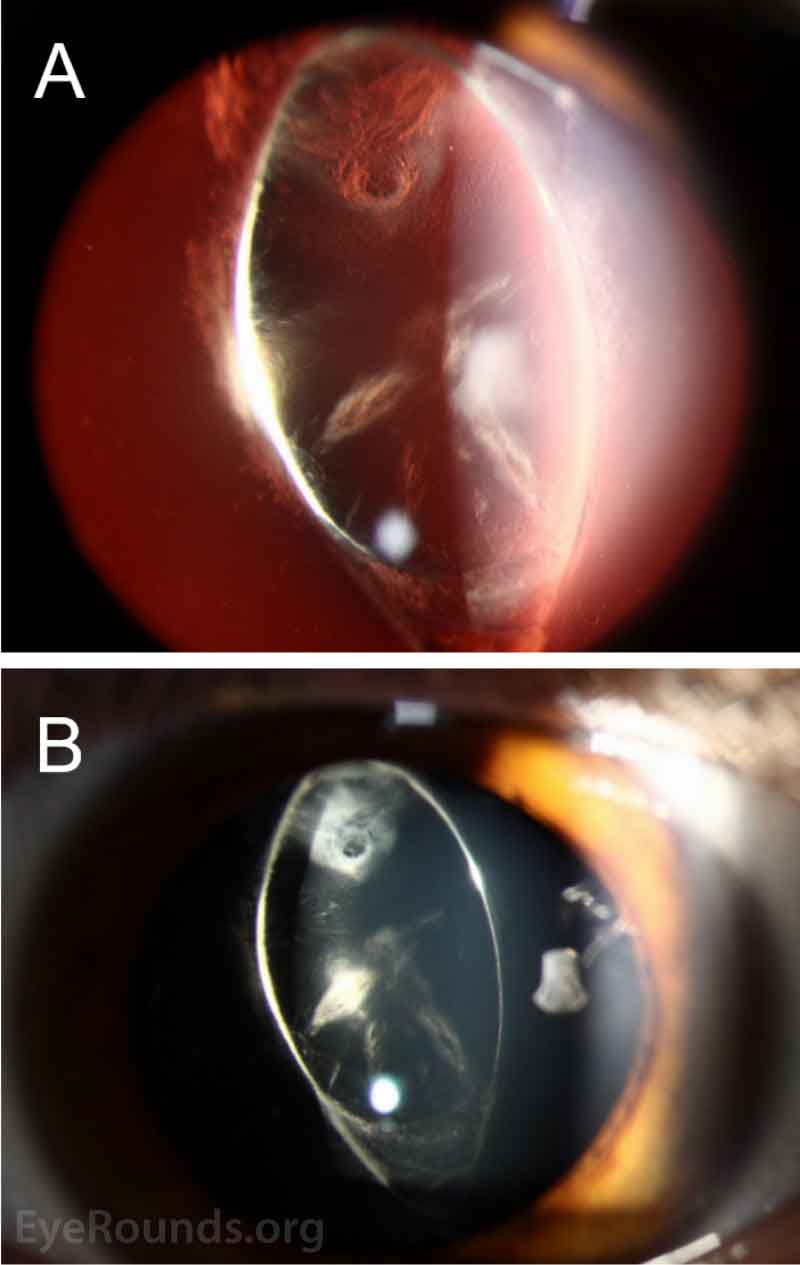Cataract with Posterior Capsule Rupture
Categories:
- Cataract / Lens
- Pediatrics
- Trauma
Photographer: Douglas B. Critser, CRA, OCT-C
Contributor: Kelly H. Yom, BA; Heather A. Stiff, MD; Richard J. Olson, MD
Posted September 17, 2020
This is a traumatic cataract with large longitudinal rupture of the posterior capsule in a young patient, seen on slit lamp exam (A) with retroillumination and (B) without retroillumination. There is significant prolapse of lens material centrally, with posterior bowing and protrusion of the lens into the vitreous cavity. A dense lens opacity is also seen, consistent with a posterior subcapsular cataract.
In the formation of a posterior capsule rupture, it is thought that the rapid compression-expansion forces from blunt force injury are transmitted posteriorly through the lens, leading to avulsion and rupture at the thinnest part of the capsule, which is the posterior pole [1]. Because the nucleus of the lens is softer and more flexible in children, younger patients are more susceptible to development of traumatic cataracts and subsequent posterior capsule rupture.
References
- Lee SI, Song HC. A case of isolated posterior capsule rupture and traumatic cataract caused by blunt ocular trauma. Korean J Ophthalmol. 2001;15(2):140-144.



